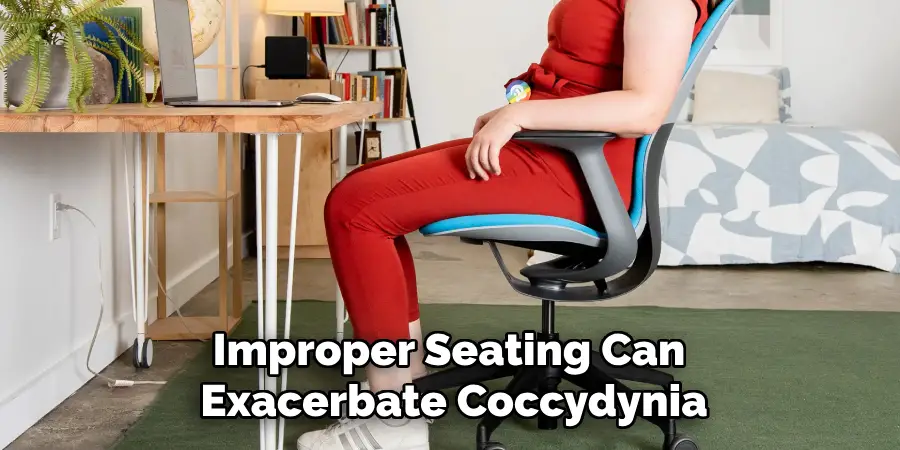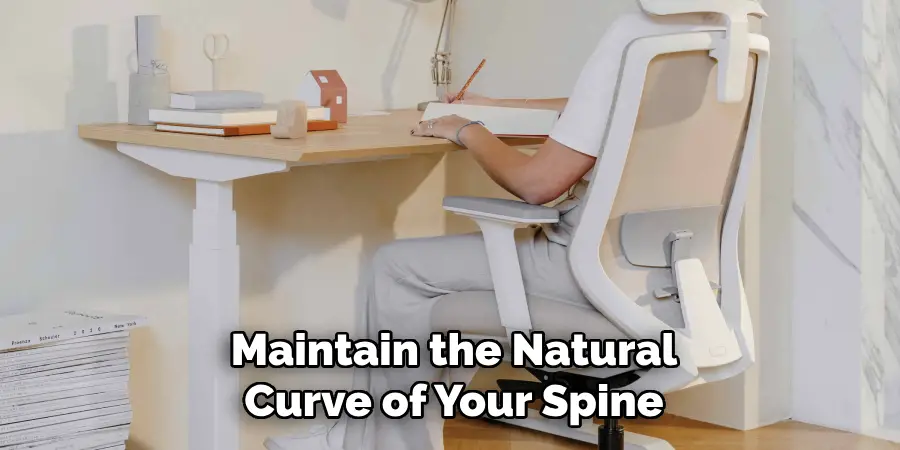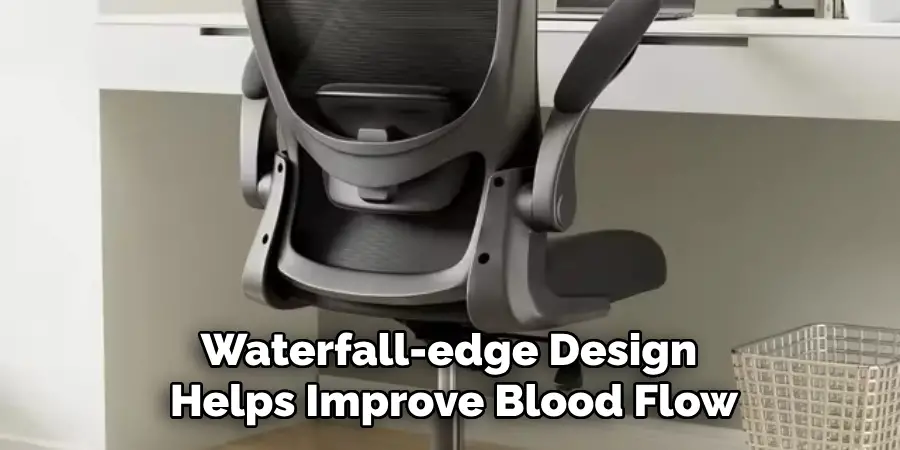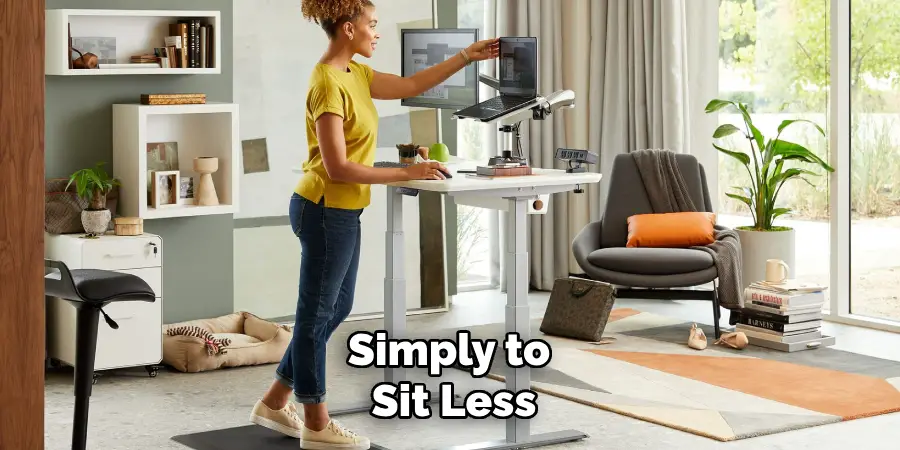Sitting for extended periods can exacerbate tailbone pain, making it essential to adjust your chair for maximum comfort and support. Tailbone pain, also known as coccydynia, often results from prolonged sitting, poor posture, or injury. By correctly adjusting your chair, you can reduce the pressure on your tailbone and alleviate discomfort. This guide provides step-by-step instructions on how to adjust chair for tailbone pain effectively.

Importance of Ergonomic Seating
Ergonomic seating is crucial for maintaining overall wellness and reducing the risk of developing musculoskeletal issues, such as tailbone pain. Properly designed ergonomic chairs offer essential support to the natural curves of the spine, promoting good posture and distributing body weight evenly. This reduces pressure points, particularly in the lower back and tailbone area, minimizing the discomfort associated with prolonged sitting. Beyond immediate comfort, ergonomic seating can significantly enhance productivity and concentration, as physical discomfort is minimized, allowing for longer periods of focused work without distraction. Investing in ergonomic seating is not merely about comfort; it is about fostering a healthier, more productive lifestyle.
Understanding Tailbone Pain and Seating Issues
Tailbone pain, medically known as coccydynia, can be a persistent and uncomfortable issue resulting from a variety of causes. Common triggers include falls, trauma, repetitive strain from prolonged sitting, childbirth, or even certain sports that put prolonged pressure on the coccyx area. The tailbone, or coccyx, is the small triangular bone at the base of your spine and, while it’s a relatively small part of the body, it plays a critical role in supporting your posture.

Improper seating can exacerbate coccydynia by concentrating pressure on this sensitive region, leading to increased pain and discomfort. Chairs without adequate cushioning, improper alignment, or lack of support in the lower back can all contribute to tailbone issues. Therefore, understanding the relationship between seating and tailbone pain is vital for selecting the right furniture and seating positions that alleviate stress on the coccyx and promote overall spinal health.
10 Methods on How to Adjust Chair for Tailbone Pain
1. Adjust Seat Height to Align Your Hips and Knees
Ensure that your chair’s height allows your knees to be at a 90-degree angle with your feet flat on the ground. Your hips should be slightly above your knees to reduce unnecessary pressure on your tailbone. Sitting too low or too high can tilt your pelvis backward, putting more strain on the coccyx.
Tip: If your feet aren’t flat, invest in a footrest to maintain proper alignment.
2. Use a Chair with Adjustable Lumbar Support
A good chair with proper lumbar (lower back) support helps maintain the natural curve of your spine, which in turn reduces stress on the tailbone. Adjust the lumbar support so it fits firmly into the curve of your lower back.

Why it works: Research shows that supporting the lumbar spine minimizes pressure on other areas, including the tailbone.
3. Tilt the Seat Forward Slightly
Most ergonomic chairs allow you to adjust the tilt of the seat pan. Tilting the seat forward just a few degrees reduces direct pressure on the tailbone by shifting your weight onto your thighs instead.
Pro Tip: Avoid leaning too far forward as it might strain your lower back and increase discomfort.
4. Add a Cushion to Your Seat
Placing a coccyx cushion or a gel seat cushion on your chair can make a world of difference. Designed with a U-shaped cutout, coccyx cushions provide relief by removing direct pressure from the area surrounding your tailbone.
Fun Fact: Studies have shown that proper cushioning can reduce seated pressure by up to 30%.
5. Ensure the Seat Depth is Adjusted to Your Body
The depth of your chair’s seat should allow you to sit back fully while leaving a gap of about 2-4 inches between the front edge of the seat and the back of your knees. If a seat is too deep, it may force you into a slouched position, which increases tailbone pain.
How to Adjust: Look for a chair with an adjustable seat depth or use a cushion to shorten the depth manually.
6. Use a Chair with a Waterfall-Edge Design
A seat with a rounded, waterfall-edge design helps improve blood flow to your legs and reduces the risk of compressing your tailbone as you sit.

Ergonomic Insight: Flat-edged chairs have been found to increase pressure under the thighs, which can inadvertently affect the alignment of your pelvis and tailbone.
7. Recline Your Backrest to a Comfortable Angle
Sitting upright at exactly 90 degrees is not always the best option for prolonged periods. Recline your chair’s backrest slightly to around 100–110 degrees. This position minimizes compression on your spine and tailbone while providing essential support for your back.
Fact: Studies recommend avoiding slouched or stiff postures, as both put undue pressure on the tailbone and lumbar region.
8. Adjust Armrests to Keep Your Shoulders Relaxed
Your armrests should be positioned so your elbows form a 90-degree angle, allowing your shoulders to relax. Improper armrest positioning can cause tension in your upper body, which can indirectly affect your tailbone by encouraging poor posture.
Bonus Tip: If your chair doesn’t have armrests or they’re not adjustable, consider upgrading to a more ergonomic chair.
9. Invest in a Saddle Chair or Kneeling Chair
If traditional seating options haven’t worked for you, new chair designs like saddle chairs or kneeling chairs may help. These unique designs shift weight away from the tailbone and redistribute it to other parts of your body, reducing coccyx pressure.
Quick Fact: Saddle chairs are especially beneficial for those dealing with chronic coccyx issues.
10. Incorporate Standing Breaks Throughout the Day
Sometimes, the best way to alleviate tailbone pain is simply to sit less. Stand up and stretch every 30–60 minutes to relieve pressure from your tailbone and improve circulation.

Pro Tip: Pair your ergonomic chair adjustments with a sit-stand desk for maximum comfort and health benefits.
Maintenance and Upkeep
To ensure that your ergonomic chair continues to provide relief from tailbone pain, regular maintenance and upkeep are crucial. Start by routinely checking the mechanical adjustments of your chair, such as height and tilt controls, to confirm they remain functional and responsive. If your chair includes adjustable lumbar support or armrests, verify that these components remain secure and aligned properly for optimal comfort.
Cleaning the chair’s cushioning and upholstery is also important for hygiene and to maintain material integrity; use appropriate cleaning products to avoid damage. For chairs with removable or inflatable cushions, inspect them periodically for wear or air leakage that might compromise cushioning effectiveness. By proactively maintaining your chair, you not only extend its lifespan but also preserve its ergonomic benefits, ensuring continued support for your posture and relief from tailbone discomfort.
Troubleshooting Common Issues
Even with a well-adjusted ergonomic chair, you may encounter issues that require troubleshooting. Here are some common problems and solutions:
1. Seat Height Adjustment Stuck
Sometimes, the height adjustment mechanism can become stuck due to debris or wear. To troubleshoot, check underneath the chair for any visible obstructions lodged in the mechanism and remove them. Lubricate the gas cylinder with a light oil if movements are still stiff. If the issue persists, consider contacting the manufacturer for specialized assistance or replacement parts.
2. Uncomfortable Lumbar Support
If the lumbar support feels too firm or misaligned, adjust its position or width until it fits snugly into the curve of your lower back. For chairs without adjustable lumbar support, try adding a removable lumbar cushion for additional support and comfort.
3. Wobbly or Unstable Chair
This instability usually results from loose screws or worn-out components. Inspect the chair’s frame, armrests, and base for any loose parts, and tighten them using appropriate tools. If the base is damaged, replace it to prevent further instability and potential tipping hazards.
4. Ineffective Cushion Support
If your seat cushion has flattened or become uneven over time, consider replacing it. Cushions made from high-density foam or gel tend to provide more consistent support and can significantly improve comfort levels. Verify the cushion positioning regularly to ensure it remains in the optimal position.
5. Misaligned Armrests
Armrests that feel too high or low can contribute to shoulder tension and discomfort. Restore them to the proper height and angle, making sure your elbows are positioned at approximately 90 degrees. If adjustment options are limited, pad the armrests with external cushioning for temporary relief.
6. Chair Creaking Noises
Creaking sounds are often due to friction between components. Inspect all joints and moving parts, and apply lubricating oil or spray on the areas where metal components come into contact. Regular maintenance can prevent further wear and prolong the chair’s lifespan.
Conclusion
In summary, achieving comfort while working or sitting for extended periods hinges on selecting and maintaining the right ergonomic chair. As we’ve explored, various adjustments and innovations such as proper height settings, lumbar support, and alternative seating options play a crucial role in reducing tailbone pain and preventing related discomfort. Thanks for reading, and we hope this has given you some inspiration on how to adjust chair for tailbone pain!

